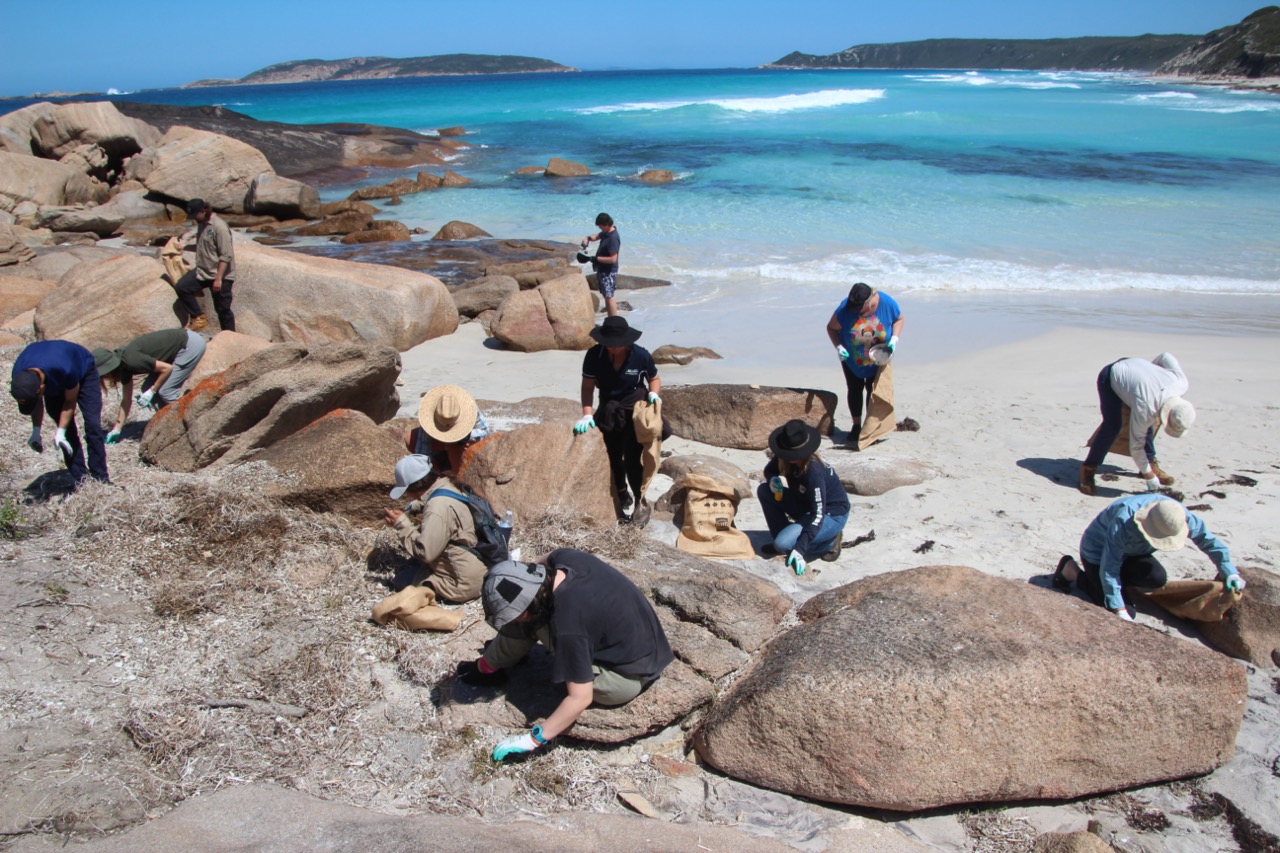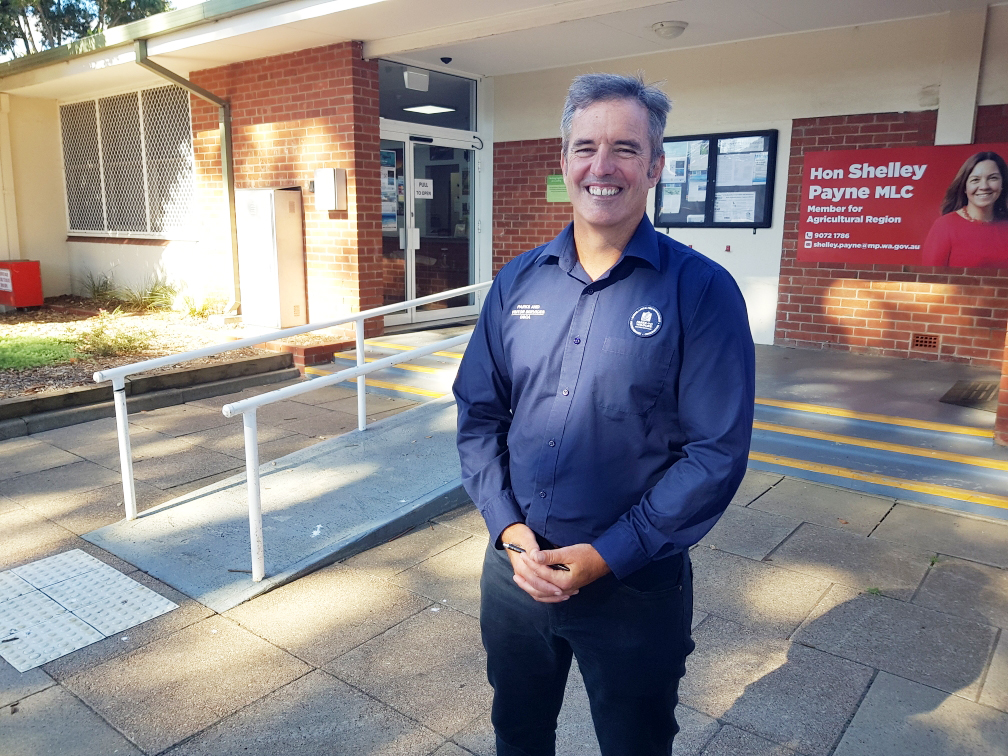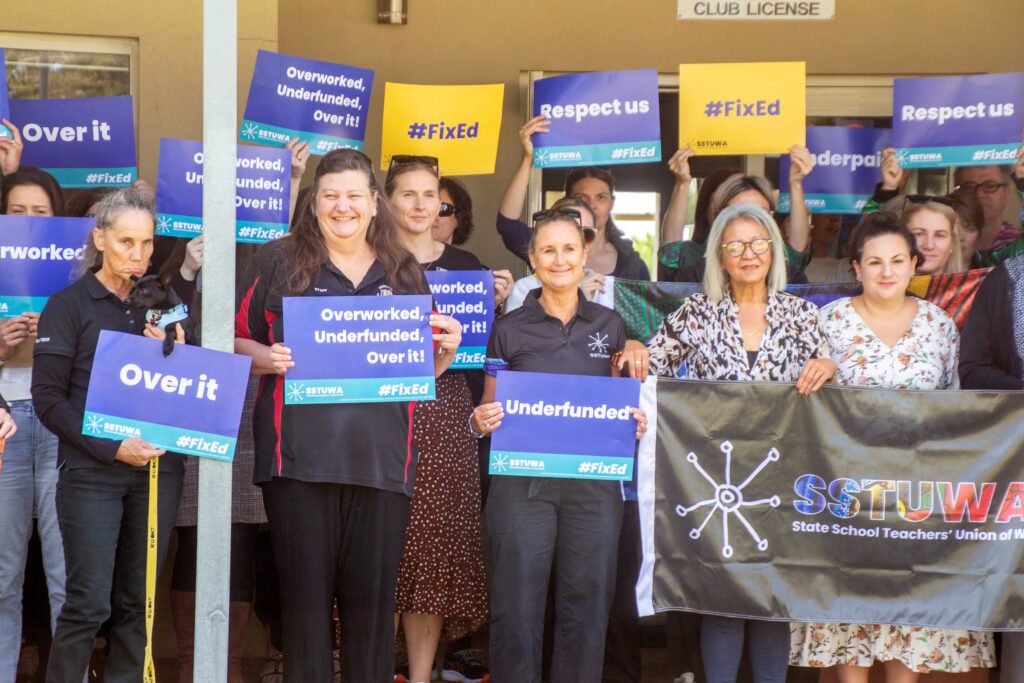These Tjalraak Rangers and community volunteers cleaned up Picnic Cove beach on Monday.
Upon first inspection, Esperance’s beaches appear to be mostly free from litter and washed-up rubbish.
However an Indigenous led-project shows one must literally dig a little deeper to see the impacts of landfill along Esperance shores.
On Monday, Tjaltjraak rangers conducted a beach cleanup in collaboration with Tangaroa Blue, a nation-wide organisation focused on cleaning beaches and stopping more pollution.
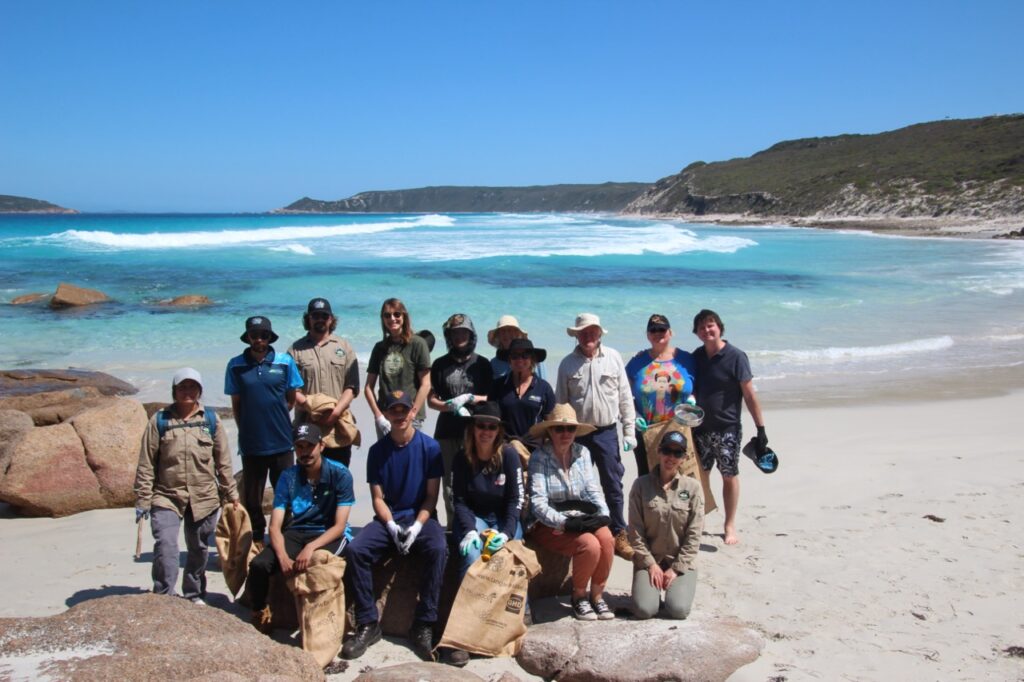
The clean-up crew included the rangers, Tangaroa Blue representatives and Esperance community volunteers who scoured the sands of Picnic Cove to remove everything from empty drink cans to pea-sized resin pellets called nurdles.
Tjaltjraak’s marine eco-toxicologist Jennifer lavers said these tiny plastic pellets were having a huge impact on Esperance wildlife.
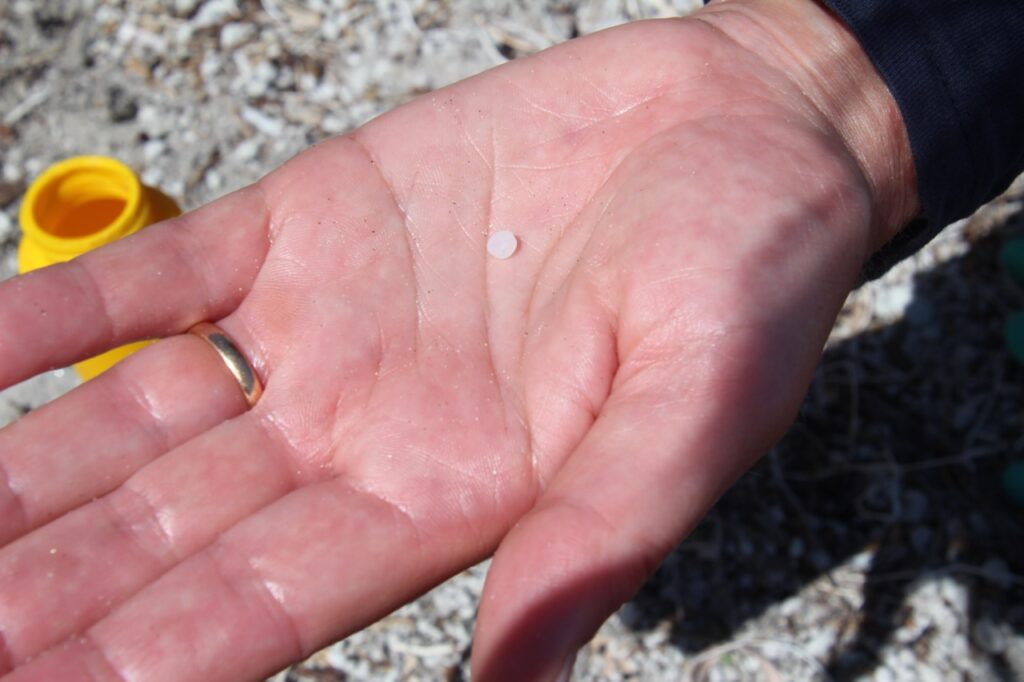
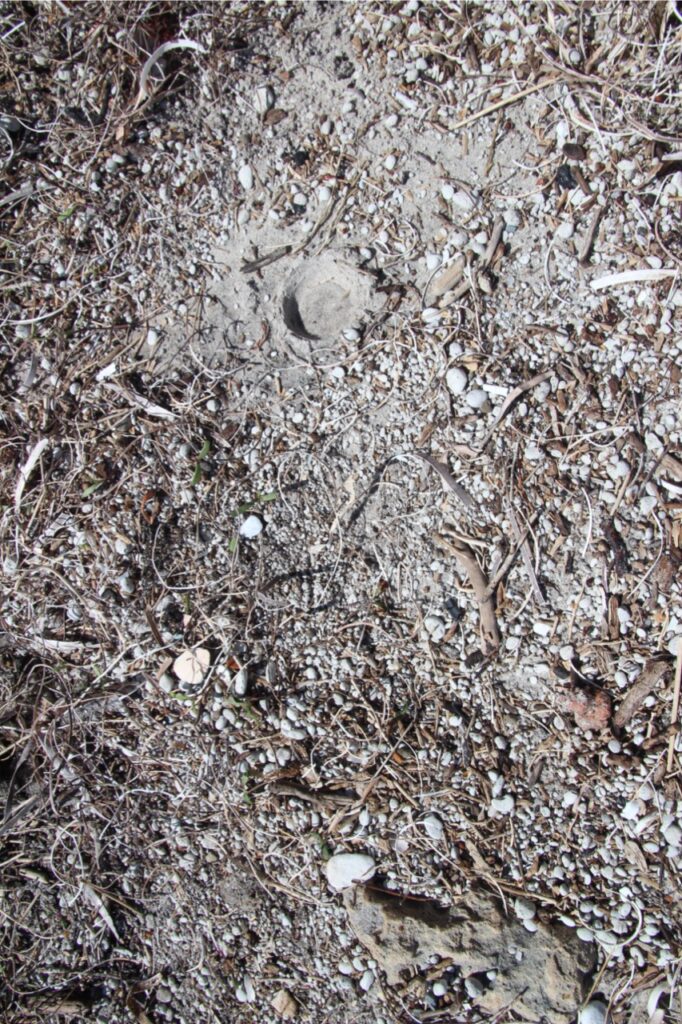
“Those resin pellets float on the ocean’s surface and because they look like fish eggs, they get eaten by everything,” she said.

Also a seabird ecologist, Dr Lavers said in her studies of ocean birds, including those on the islands off Esperance, she had found baby birds with up to fifty resin pellets in their stomachs.
Australian record broken?
“I have never seen that many resin pellets in individual birds except here,” she said.
“It’s potentially record-breaking for Australia.”
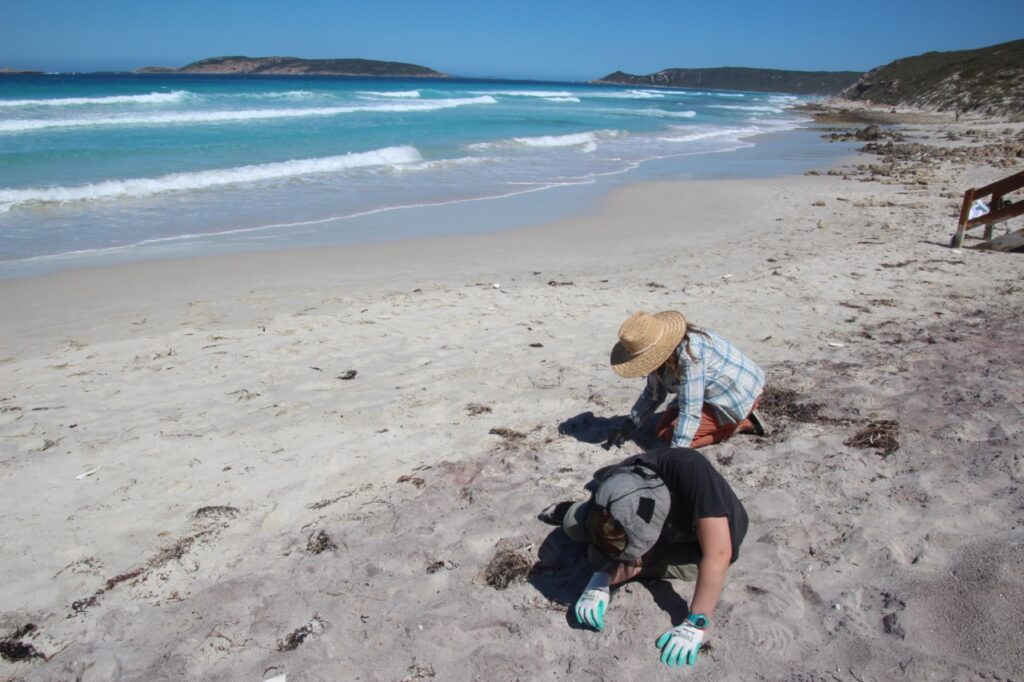
Tangaroa Blue chief executive Heidi Tait said finding the nurdles was the first step to identifying and stopping the littering at the source.
“You guys don’t have plastic manufacturing in Esperance, so where is it coming from?” Mrs Tait said.
“We go to the factories, and we assess whether they are polluting outside of their fence line.
“We can work with the EPA to tell them which factories are polluting and how many nurdles we are finding all across Australia.”
Tangaroa Blue began as Mrs Tait’s one-woman mission in Margaret River where she cleaned beaches on her own and identified the rubbish she collected.
Now, there have been more than 27 million recorded items of rubbish through Tangaroa Blue.
App brings results
With data from 250,000 contributors from around Australia, Tangaroa Blue has developed an app so citizen scientists can contribute to the cause by sorting their own collected rubbish.
“By having the data base and having an ability for any person anywhere to go to the beach, do a cleanup and in the app record exactly what they find, that continually builds that evidence to show where we have problems and what the problems are,” Tait said.
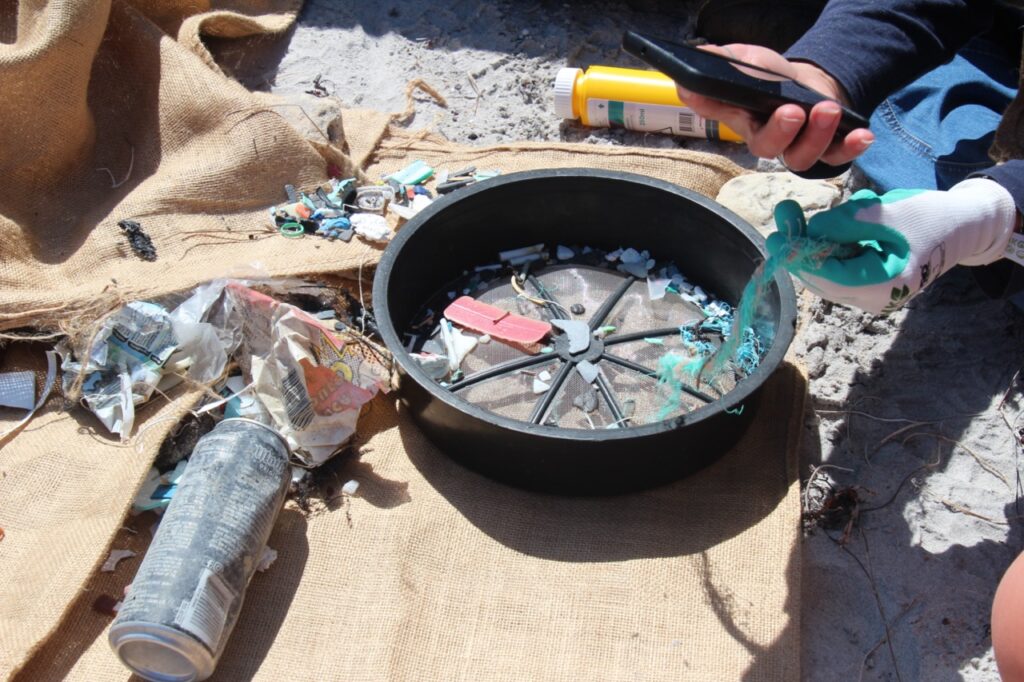
Dr Lavers said a great example of Tangaroa Blue’s impact was when the team successfully stopped lobster bait box strapping tape used by fisherman from polluting beaches by working to change the laws for the use of that plastic.
“Now in WA it is illegal to bring your bait onto the boat with those strapping tapes still attached,” she said.
“You have to cut them off on shore and dispose of them properly.
“We didn’t find a single strapping tape today.”
Styrofoam phase-out
Mrs Tait did find a piece of Styrofoam she said was part of an old weather balloon.
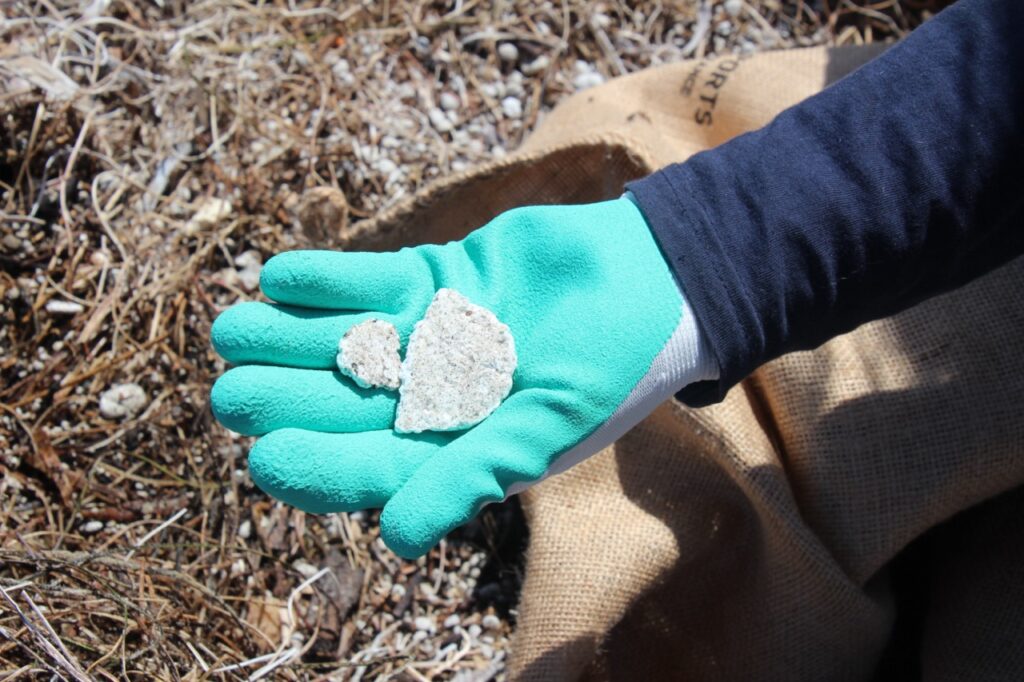
She said Tangaroa Blue had initiated the steps the government took to replace the Styrofoam used in weather ballons with cardboard.
With the sample she found in Esperance she intends to identify some of the last Styrofoam weather balloons been used in the area.
The Picnic Cove beach cleanup was part of the 20th anniversary celebration of Tangaroa Blue, and the beginning of a beach cleanup tour Mrs Tait will be leading from the south of WA up the west coast.
As part of an Indigenous led-project, Esperance Tjaltjraak rangers plan to conduct beach cleans throughout November and December this year and Dr Lavers said they encourage Esperance locals to get involved.

